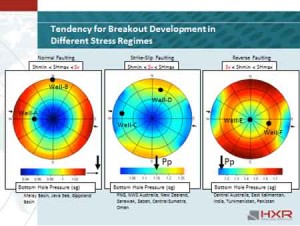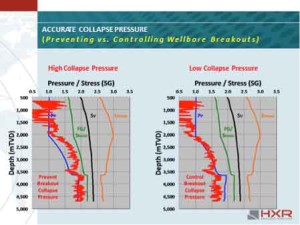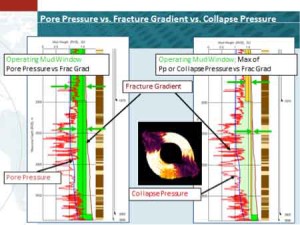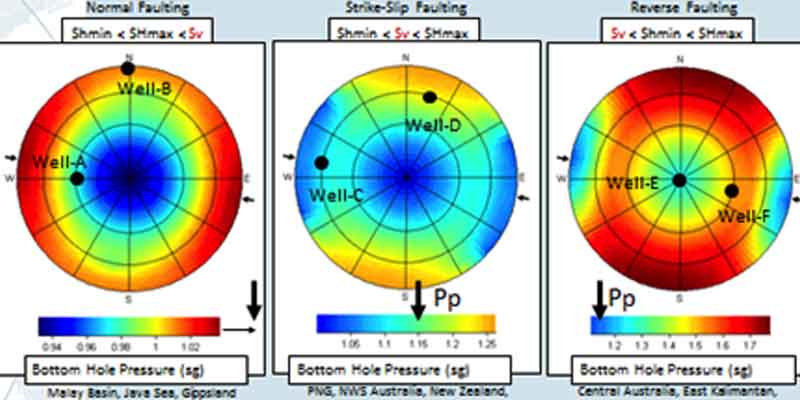How Geomechanics is Crucial to ERD Well Design
Prior to designing a drilling program for a target wellbore, it is imperative to understand the rock mechanics going on along the wellpath, as well as the target location. Subsurface interactions rely on indirect measurements, from multiple disciplines, to make interpretations about how forces, and their subsequent pressures and stresses, mechanically interact with the rock, fluids, and formations below the surface. That is critical, because if we don’t know how the rock is going to act when a certain mud type is introduced into it, or what the formation limits are in terms of mud weight or ECD, then we can’t perform a successful drillstring design or casing program.
The application of geomechanics software permits the user to investigate the location of a target well to better explain all forces and conditions the wellbore will encounter. Geomechanical studies generate a target well or a regional location’s history. This history holds information about the interactions between the various forces and materials in the earth and describes the basin characteristics that provide clues as to how the basin may have evolved and how the sediments were deposited and deformed.
Up until relatively recently, the full story of what was going on downhole wasn’t readily available. Pore pressure predictions were based on experience and various types of standards and regional models built on past data collection. Since pore pressure is best indicated in clean shales, early attempts to predict pressure changes used mainly mechanical trends (DX and DXc), in addition to the subjective opinions, of wellsite geologists or mudloggers, in the rock characteristics measured on the surface, such as changes in background gas or mud cut, changes in the shape of the cuttings being returned, etc. As time went on, additional data was used to develop compaction trend overlays. These initial solutions, while archaic, at the time were extremely useful in alerting the drilling team that significant changes were occurring downhole. It wasn’t until the advent of advanced LWD tools that a clear picture of what is transpiring downhole really came in focus.
HXR Drilling Services uses JewelSuite™ software to develop a “story” about the past and model the present conditions. Today’s geomechanics studies are central to casing design, mud selection (both weights and chemistry), and tubular utilization, since it will provide a planning window for ECD. Geomechanics studies can also contribute to bit selection strategies and highlight any needed changes in well trajectory. In addition, any special drilling practices that need to be used to limit instability can be identified and drilled into the crews, further minimizing costly downtime for “self inflicted” wounds.

Projects begin with a pre-drill 1D pore pressure and wellbore stability analysis. Any deviations from the original model are identified and corrected utilizing realtime data gathered and correlated by HXR’s onsite Wellbore Stability Specialists. Geomechanical pre-drill analyses provide a level of certainty to the operator that the trajectory, casing points and drilling fluid scenario matches what the formation will need to a high probability, and are used to predict important parameters. As with any geomechanics software, the window of uncertainty derived from pre-drill pore pressure models increases with well depth. For the best results, predrill models must be updated as drilling progresses. Geomechanics real time analyses refines a pre-drill analysis through observations of well behavior, petrophysical data, mud logger data and interactions between the bit and bottom-hole assembly with the formation. Modifications to the original mud weight plan or casing design are predicted based on the updated wellbore conditions for greater precision.
HXR Drilling Services bridges pre-drill and real time data using WellCheck™ with a RT module. Not only can a comprehensive geomechanical model be developed, but also can be tested, by completing a quantitative risk assessment (QRA) on the casing points, the entire wellbore, or just sections that have proved problematic on offset wells. The QRA is a tool that is used to measure the sensitivity of the parameters: Sv (ppg), SHmax (ppg), Shmin (ppg), Pore Pressure (ppg), and the azimuth of SHMax, as well as a sensitivity analysis to wellbore inclination. The sensitivity of each parameter defines which has the most impact on the geomechanical model, as a probability distribution. This allows for efficient QC’ing of the data inputs, identify areas where additional data may be needed, and can significantly add to the strength of any geomechanical model.

Over time, geomechanical studies have evolved to provide stories and pictures of the subsurface conditions during both pre-drill planning, as well as during actual drilling operations. Due to more modern data collection and accuracy, pre-drill predictions are better and corrections for abnormal conditions are easily added to enhance model corrections in real time. Geomechanical models for pore pressure prediction and wellbore stability are the leading edge of any successful drilling program.

About the Author
Posted on: October 1st, 2015
Filed under: Blog, Extended Reach Drilling, Geomechanics, Well Design, Wellbore Stability

